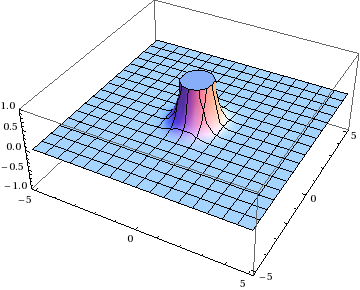A simple regularization example
Posted by David Zaslavsky on
Earlier this month I promised to show you a simple example of regularization. Well, here it is. This is a particular combination of integrals I’ve been working with a lot lately:
A quick look at the formulas shows you that both integrands have singularities at \(\mathbf{x} = 0\) and \(\mathbf{y} = 0\).
OK, well, that’s why we have two integrands. We can change variables from \(\xi\mathbf{y}\to\mathbf{x}\), subtract them, and the singularities will cancel out, right? You can do this integral by hand in polar coordinates, or just pop it into Mathematica:
Just one problem: that’s not the right answer! You can tell because the value of this integral had better depend on \(\xi\), but this expression doesn’t. This isn’t anything so mundane …